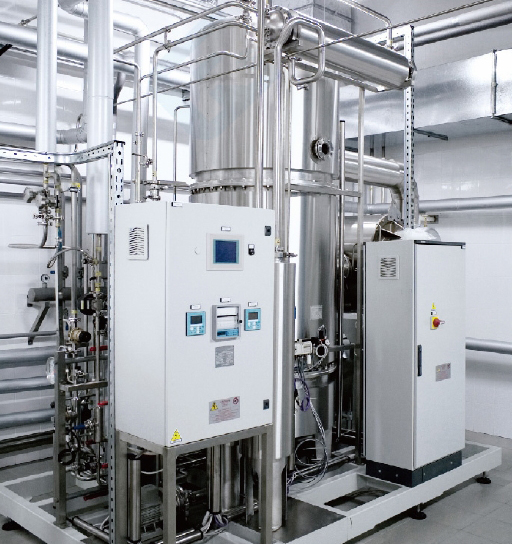Pure water system
- Tel:0550-7660111
- Fax:0550-7661008
- Email:1198754344@qq.com
Description
1. Classification of laboratory pure water
1. Grade III pure water
The physical purity of grade III pure water is generally less than 50uS/cm, and single steam water, double steam water, ordinary deionized water and reverse osmosis water all belong to this level. It is generally purified from tap water. Grade pure water is mainly used for cleaning bottles and dishes, water for high-pressure disinfection devices, water for artificial environment rooms and water for ultra-pure water meters.
2. Grade II pure water
Grade II pure water is a fuzzy range, commonly represented by 5-15m-cm. However, Grade II pure water is not strictly limited to this range, and the range of 1 to 17M-cm can be considered to be grade II pure water. Grade II pure water is generally made of grade II pure water after ion exchange or electrodialysis. It is mainly used for the preparation of general reagents, water for ordinary chemical experiments and water supply for ultra-pure water meters.
3. Class I ultra-pure water
Class I ultra-pure water refers to water with a physical purity greater than 18M-cm, and it is customary to say that the resistivity of 18.2m-cm is an indicator of class ultra-pure water. Class I ultra-pure water must be repurified from grade I or Grade I pure water by nucleon-grade ion exchange resin. It is mainly used in high-precision analytical experiments and life science experiments that require high water purity.
Water quality characterization parameters and international standards:
Characterization parameters:
1) Inorganic content -- resistance value/conductivity. 2) Organic content - TOC(total organic carbon).
3) Microbial content -- number of bacteria particulate matter content -- number of particles (there are particle size requirements, often referring to the remaining number of particles less than 0.2um).
Purification method and combined application of water:
Laboratory pure water can be prepared by the following methods, ultra-pure water to use a variety of technical means to fully meet the indicators.
Distillation method:
Distillation is a traditional method and is commonly used to make drinking water into pure water. The method can be divided into single steaming, double steaming and triple steaming according to the number of distillation, and the purity of water increases with the increase of the number of distillation. The advantages of the distillation method are simple, the one-time investment of the preparation instrument is small, and the disadvantages are relatively large energy consumption, limited water purity and limited output.
Filtration method:
Reverse osmosis (RO) membranes are usually used to filter pollutants less than 1nm in diameter, and typical reverse osmosis methods can filter out 90c of ion pollution in water, most organic pollutants and almost all particulate pollutants. Reverse osmosis has a low ability to remove non-ionic contaminants with molecular weight less than 100 Dalton, and the filtration ability of RO membranes increases with the increase of molecular weight of contaminants. In theory, this method can be 100Vo filter more than 30O Dalton molecular weight molecules and particles including colloids and microorganisms, dissolved gases can not be removed.



